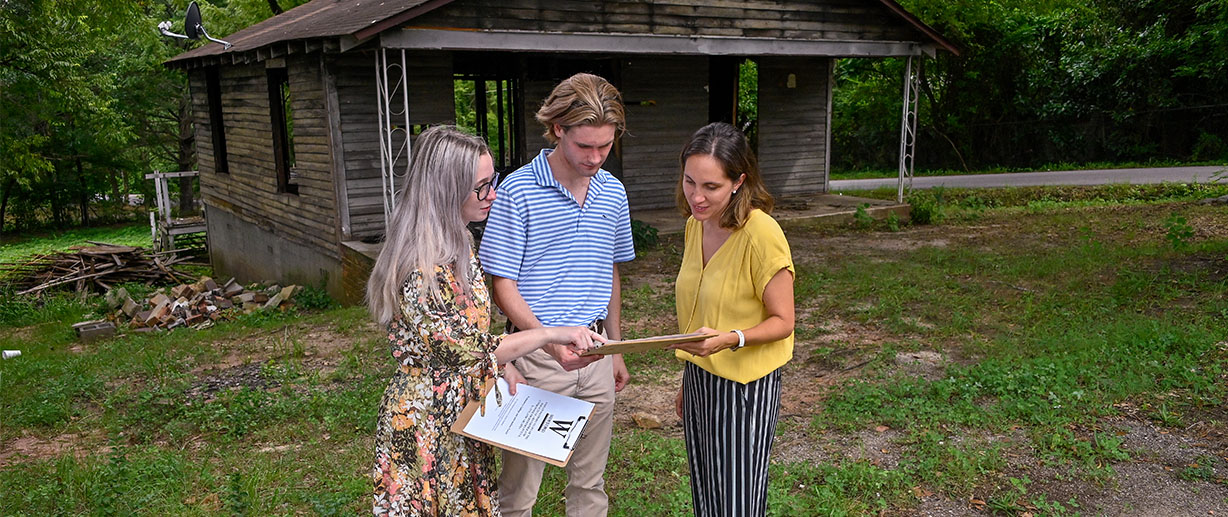By Robert W. Dalton
When cotton was king, Una, Saxon and Arcadia were flourishing communities. But the demise of the textile industry devastated the three neighborhoods northwest of Spartanburg, and today they contain the greatest density of condemned properties in the county.
Led by Dr. Alysa Handelsman, assistant professor of sociology and anthropology, and Dr. Jennifer Bradham, assistant professor of environmental studies, nine Wofford students spent the summer identifying and mapping those properties. They found 48 condemned properties – nearly 11% of the 431 condemned properties in the county – in a four-mile radius.
They also discovered a large number of abandoned properties, but those are not included in their data because they haven’t been documented by city or county officials.
“Abandoned properties are subject to a person’s interpretation, while condemned properties have been investigated,” says Drew Wilson ’23, an environmental studies major from Sandersville, Georgia, who mapped the condemned properties. “Our qualitative team has discussed the impact of abandoned houses with residents because the words are synonymous.”
Students also knocked on 500 doors and held focus groups to talk to residents about their concerns about the community.
“A lot of people are concerned for their safety because of prostitution, drugs and a perceived increase in homelessness,” says Sarah Buckmaster ’24, a sociology and anthropology major from Simpsonville, South Carolina. “Spartanburg has an abundance of health care and after school resources that these neighborhoods are not connected to. A lot of residents say it seems that Una, Saxon and Arcadia are always missing from the conversation.”
Paola Cruz ’23, a Spanish and sociology and anthropology double major from Charlotte, North Carolina, said many residents were reluctant to speak out because they feared being evicted if the property owner found out. Some were also skeptical of the students’ motives.
“A lot of people have lived here their entire lives,” Cruz says. “Their families lived here. It’s all they know. There’s still a lot of work to be done here, but now they have hope.”
Handelsman says the group has slowly gained the trust of more and more residents.
“Being present is really important, and I think people started seeing us around a lot,” Handelsman says. “We’re not going door-to-door and then disappearing.”
Jeff Hadden, chief of the Una Community Fire Department, grew up in the community. He says he’s happy Wofford is shining a light on the issues there.
“You have squatters go into these buildings and it’s not safe,” Hadden says. “This problem has been here for years, it’s just that everybody looked away from it. I’m grateful for this collaboration. It’s wonderful to have somebody pulling the attention back to the nuisance.”
